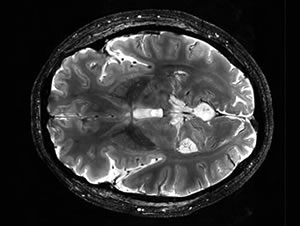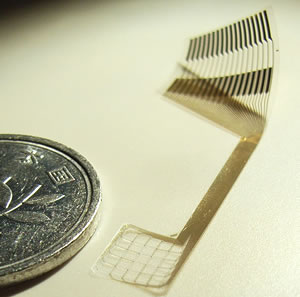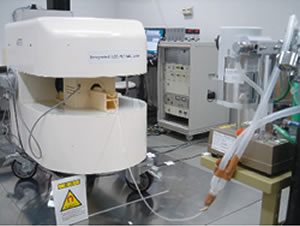Systems neuroscience
CiNet has a strong core research program in basic systems-level neuroscience, with extensive experimental facilities for both animal and human research. We have an especially strong research focus on vision and motor control, but other areas include pain, multi-sensory integration, higher cognition, decision making, language, and social neuroscience. We have strong links with the Immunology Frontiers Research Center, Osaka University Departments of Information Science and Engineering, and the RIKEN Quantitative Biology Center – all located in adjacent buildings. Similarly, there are also multiple joint research programs with clinical departments at Osaka University Hospital.


Information and communications technology
A key vision of CiNet is to explore the application of neuroscience to information and communications technology (ICT) research. This centers around a number of key questions: can insight into neuronal information processing help us create fundamentally new designs for computing and controlling information networks? Can the science of complex networks help us understand how information is processed in the brain? Can an understanding of human communication and brain processing lead to new forms of brain-based communications technology? Much of our research builds on the existing considerable expertise and infrastructure of NICT, and our research involves diverse areas including network science, Internet of Things, sensor networks, wearable sensor technology, quantum ICT, nano- and biological computing, and ultra-realistic and immersive communications technology.
Brain-machine interfaces
Our research into brain-machine interface (BMI) spans invasive and non-invasive methods of brain stimulation and recording. The majority of research into invasive BMI involves collaboration with the neurosurgical team at the Osaka University Hospital, and includes work on brain stimulation (e.g. cortical stimulation, deep brain stimulation, artificial vision) and neuroprosthetic control of robotic devices. This program is complemented by research into machine learning algorithms for brain decoding, robotics development, and technological innovations (for example, 3D printed neural prostheses, implanted microprocessing units, and implantable wireless communication systems). We also have an active non-invasive BMI program for a broader range of domains, including developing control and feedback systems for non-clinical applications ranging from domestic appliances to support systems for aviation.


Neuroimaging technology
We have a number of labs doing basic research into neuroimaging physics and technology. This includes research into high-field fMRI, integrated PET-fMRI, magnetic resonance spectroscopy (MRS) and high density near infra-red spectrospcopy. We aim to establish and develop next generation imaging technologies including phase-contrast cerebral blood flow imaging, temperature function imaging, nerve fiber function imaging, brainstem nucleus function imaging. Several researchers also do research into the development of new statistical methodologies for data analysis, especially for MEG and fNIRS.
Robotics
Our research in robotics is orientated around several distinct goals. First, a number of our labs develop robotic systems for human support. This is typically with clinical applications in mind, such as in rehabilitation and motor training, and in combination with brain-machine interfaces in patients with severe paralysis. Second, we do core research into improving robotic motor control, especially using bio-mimetic algorithms inspired by neuroscience. Thirdly, we do research into humanoid, ultra-realistic, and tele-existence robots to study human-robot interactions, communication and embodiment, and to help us understand how humans and robots can best co-exist in the future.
